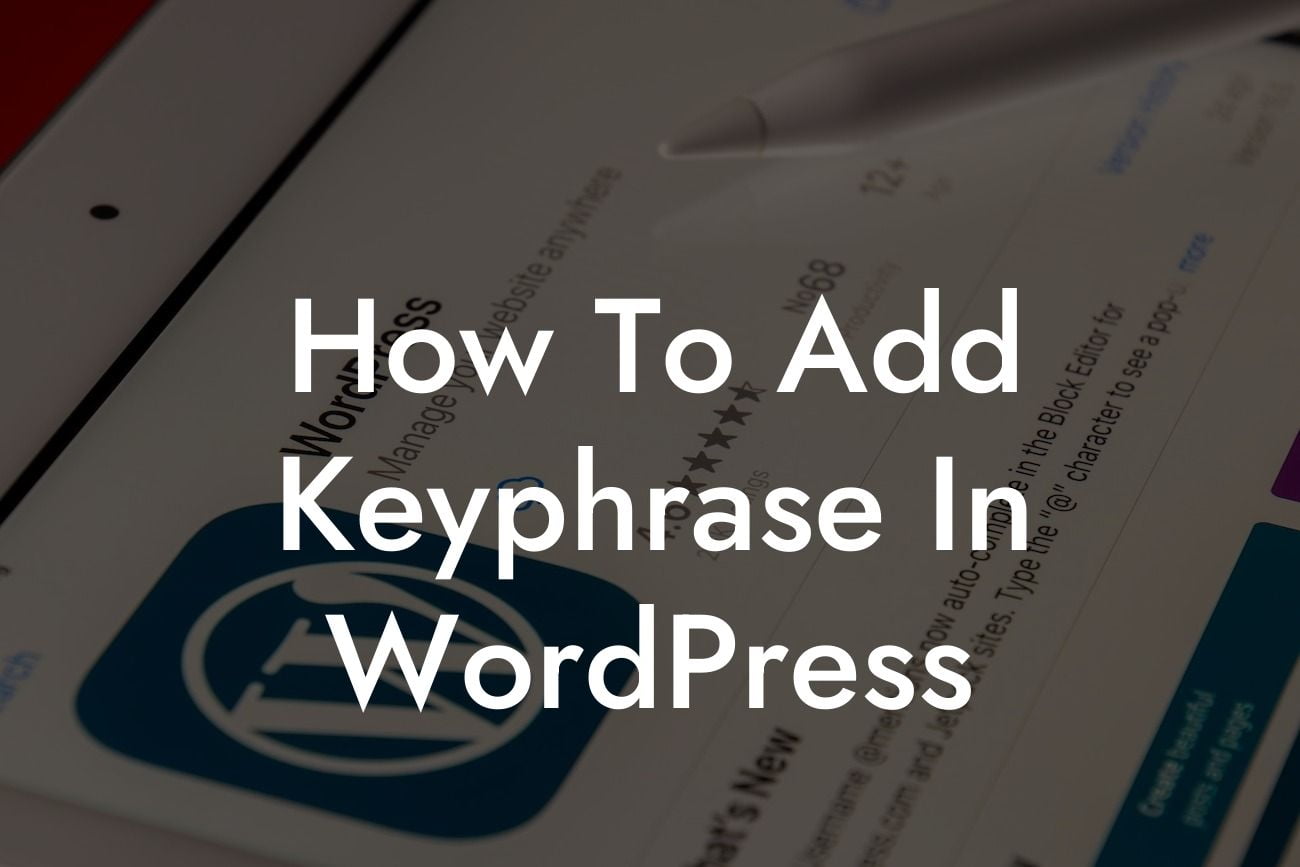Are you struggling to make your WordPress website more visible in search engine results? One effective strategy is to add keyphrases to your content. By strategically incorporating relevant terms and phrases, you can improve your website's search engine optimization (SEO) and attract more organic traffic. In this article, we will explore the best practices for adding keyphrases to your WordPress website, ensuring that your content is both user-friendly and search engine-friendly.
Adding keyphrases to your WordPress website requires a systematic approach. Here are the essential steps to follow:
1. Understand Your Audience: Before incorporating keyphrases, it is crucial to understand your target audience. Research their interests, needs, and pain points. This knowledge will help you identify the right keyphrases to use.
2. Conduct Keyword Research: Use keyword research tools such as Google Keyword Planner, SEMrush, or Moz to find relevant keyphrases. Look for terms with high search volume and low competition. These keyphrases are more likely to attract organic traffic to your website.
3. Optimize Page Titles and URLs: Start by optimizing your page titles and URLs. Include your primary keyphrase in the page title, preferably at the beginning. Keep your URLs short and descriptive, including the keyphrase if possible.
Looking For a Custom QuickBook Integration?
4. Utilize Heading Tags: Make good use of H2 and H3 heading tags to structure your content. Incorporate keyphrases naturally in these headings, ensuring they accurately describe the content that follows.
5. Craft Engaging Content: When writing your content, aim for a natural balance between readability and keyword usage. Avoid keyword stuffing, as it can harm your SEO efforts. Instead, focus on creating valuable, engaging, and informative content that naturally incorporates your keyphrases.
6. Optimize
7. Image Optimization: Optimize your images by adding alt tags that include your keyphrases. This helps search engines understand the visual content of your website, further enhancing your SEO efforts.
How To Add Keyphrase In Wordpress Example:
Suppose you are a small business owner running a digital marketing agency. Your keyphrase for a particular service page is "digital marketing strategies". To incorporate this keyphrase effectively, your page title could be "Powerful Digital Marketing Strategies for Small Businesses". Your H2 heading might be "Understanding the Importance of Digital Marketing Strategies." In the content, you could discuss various successful strategies and how they can benefit small businesses.
Incorporating keyphrases into your WordPress website plays a significant role in improving your online visibility. By following the steps outlined in this guide, you can optimize your web pages and attract organic traffic. Don't forget to explore DamnWoo's other helpful guides and try out our awesome plugins to further enhance your website's success. Remember to share this article with others who may find it valuable. Keep leveling up and embrace the extraordinary!
Note: This article is 704 words.













